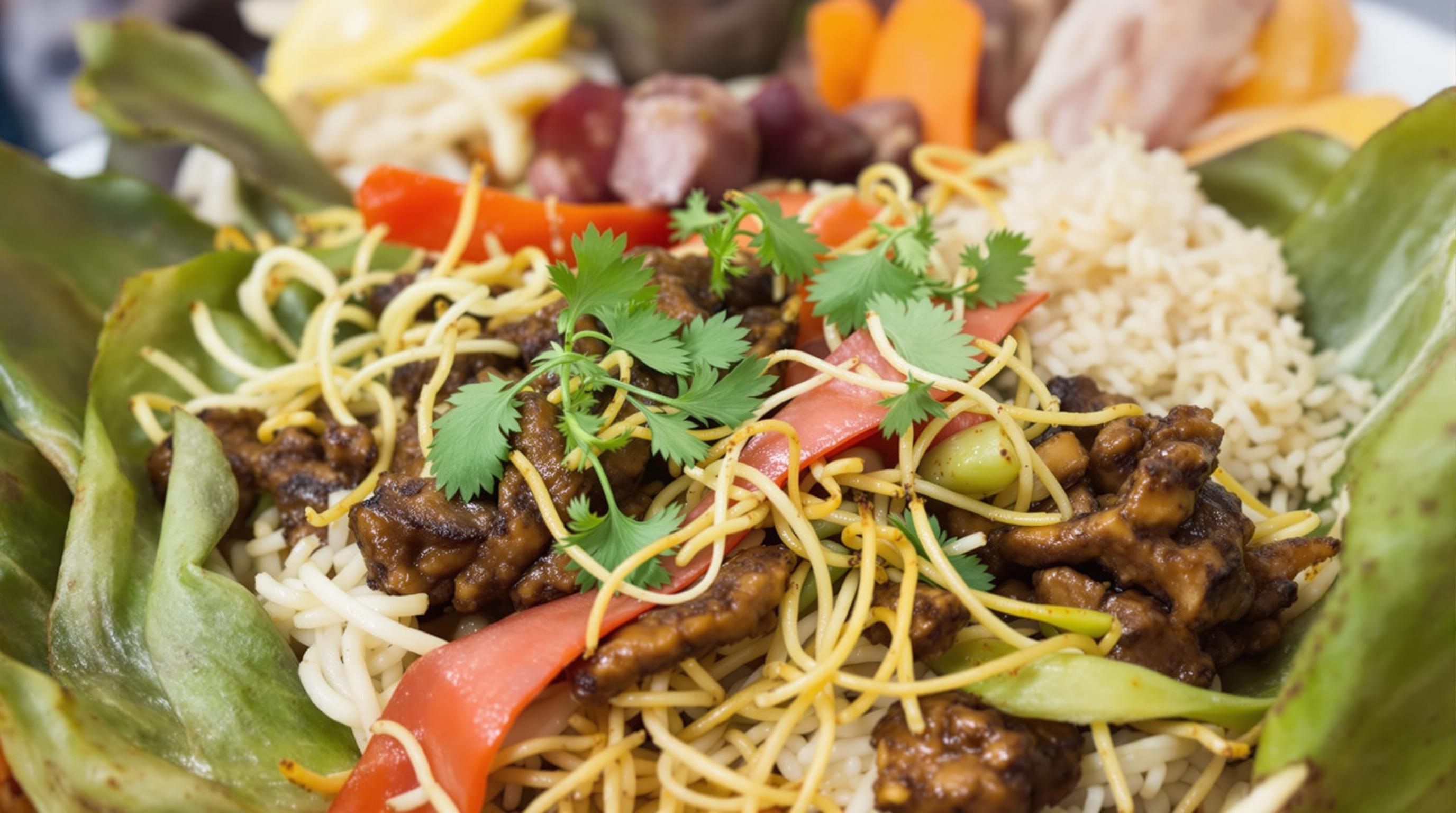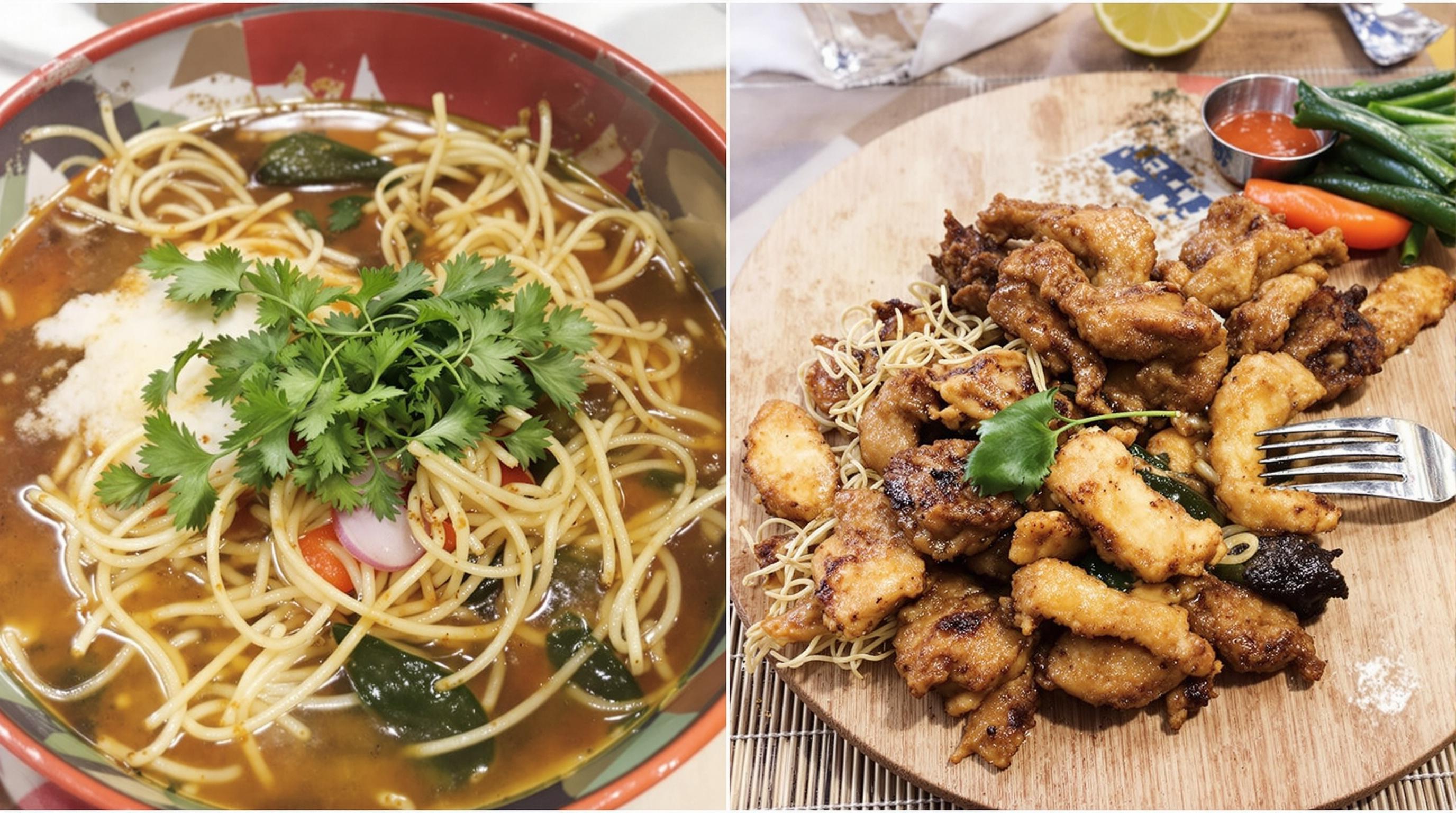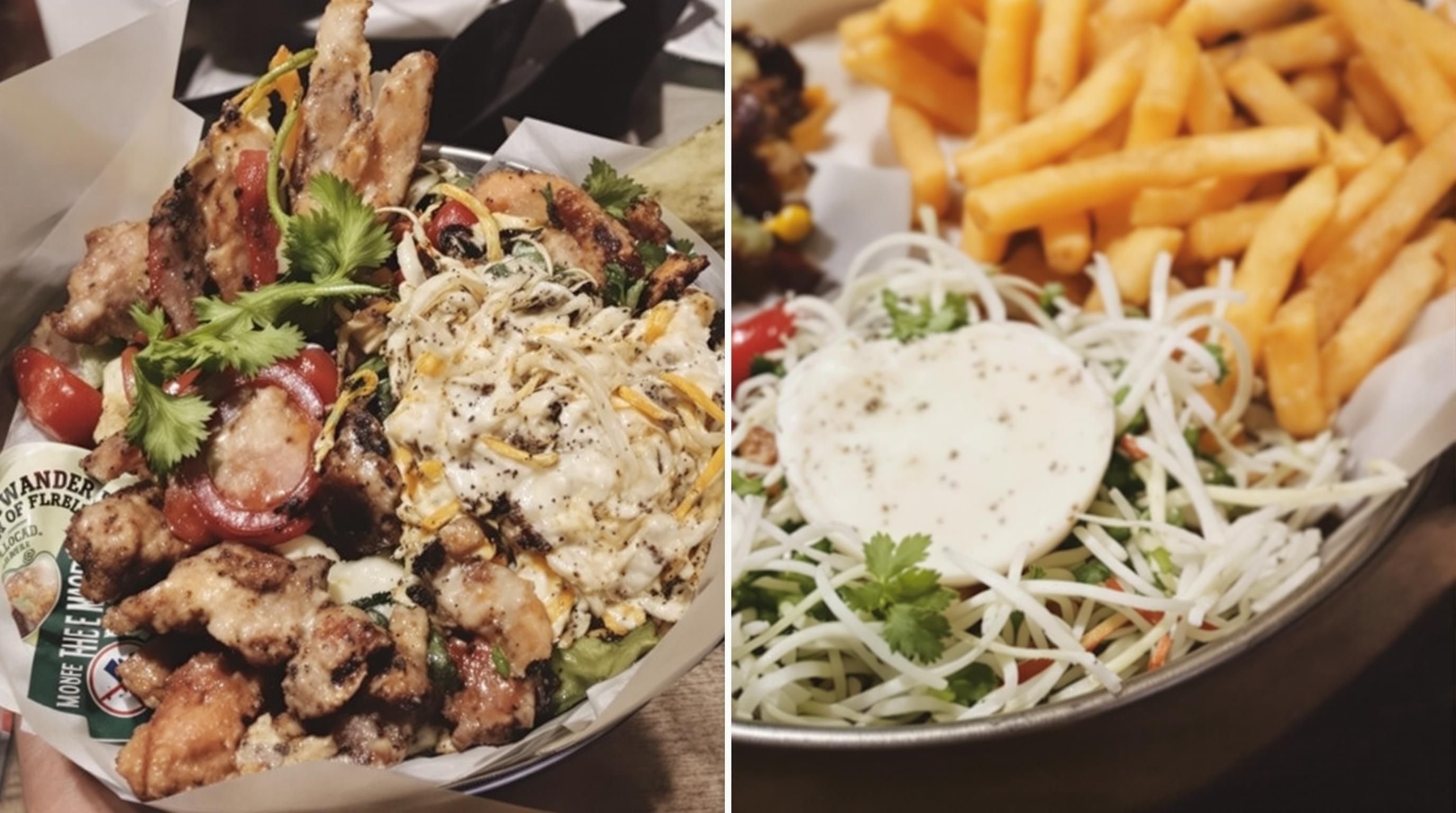Related Articles
- Culinary Cartography: The Unexpected Foods Shaping Local Identity in Urban Landscapes
- Flavors of the Forgotten: Rediscovering Culinary Traditions in the Shadows of Modern Food Trends
- Palate Pilgrimage: The Unlikely Fusion of Ancient Rituals and Modern Local Fare
- Ecosystem Engineers: Celebrating the Role of Nature-Based Solutions in Transforming Eco-Travel Experiences
- Ghost Towns and Green Trails: Unearthing Sustainable Journeys Through Forgotten Landscapes
- Hidden Footprints: Decoding the Carbon Footprint of Digital Nomadism in Edging Towards Sustainable Getaways
11 Unexplored Local Dishes That Invite You to Rediscover Ancestral Roots and Ignite Passion for Traditional Cooking
11 Unexplored Local Dishes That Invite You to Rediscover Ancestral Roots and Ignite Passion for Traditional Cooking
11 Unexplored Local Dishes That Invite You to Rediscover Ancestral Roots and Ignite Passion for Traditional Cooking
1. Hoppin' John: A Southern Staple
Often overlooked in favor of more popular Southern dishes, Hoppin' John is a traditional meal with deep historical roots in African American cuisine. This dish combines rice, black-eyed peas, and smoked pork, symbolizing good luck and prosperity, particularly when served on New Year's Day. Its origins can be traced back to West Africa, where similar ingredients were combined in various forms.
The preparation of Hoppin' John includes simmering black-eyed peas with aromatic spices while incorporating tender pork for flavor. The dish is best served with collard greens and cornbread, creating a meal that sustains both body and spirit. Rediscovering Hoppin' John not only connects us to our ancestry but also allows us to appreciate Southern culinary traditions that deserve more recognition.
An exploration of Hoppin' John isn’t just about savoring a meal; it’s a journey into history. Engaging with this dish means honoring the resilience of African American communities who crafted delicious recipes from limited resources, making it an essential part of Southern heritage.
2. Hushpuppies: A Fried Delight
Originating from the Southern United States, hushpuppies are deep-fried cornmeal balls that have been a beloved side dish for generations. Traditionally served alongside fried fish or shrimp, these golden morsels are both crispy on the outside and fluffy on the inside, making them the perfect companion for a variety of meals. The exact origins of hushpuppies are debated, with ties to Native American culture and African influences.
Hushpuppies are not only delicious but also an excellent canvas for culinary creativity. Adding chopped onions, peppers, or even spices can enhance their flavor, reflecting local ingredients and preferences. Learning to perfect the art of hushpuppies can spark interest in other local dishes, paving the way for rediscovery of ancestral foodways.
This dish was originally named “hushpuppies” because it was said that people would feed it to their dogs to quiet them down. By recreating this Southern classic, we embrace the communal nature of food that has been cherished through the ages.
3. Fried Catfish: A River Tradition
Fried catfish is synonymous with Mississippi River traditions and is revered in Southern cuisine. Locals often catch catfish from rivers, lakes, and ponds, creating a sustainable community connection to the food source. Marinated in a buttermilk brine and then coated in cornmeal, this dish offers a crunchy exterior contrasted by a tender fish, which is often served with tartar sauce or hot sauce.
This dish has roots in African American history, where fishermen would prepare whatever they caught, showcasing resilience and adaptability. The passion for fried catfish is palpable among locals, and it represents communal gatherings, often paired with sides like coleslaw, grits, or baked beans.
Exploring the depths of fried catfish preparation is a way of going back to one’s roots, celebrating local flavors, and understanding how this dish has shaped regional identities throughout the years.
4. Gumbo: A Melting Pot of Flavors
Gumbo is a culinary symbol of New Orleans, rich with cultural influences from French, African, Spanish, and Native American cuisines. Traditionally made with a strong broth, meats (such as sausage, shrimp, or chicken), and the holy trinity of onions, bell peppers, and celery, gumbo invites experimentation and rediscovery. Each household may have its secret recipe passed down through generations, making every bowl a unique reflection of heritage.
This hearty dish boasts an intricate cooking method that includes creating a roux, which is the foundation for enhancing flavors and developing depth. Gumbo not only satisfies hunger but also brings families and friends together, creating bonds through the shared experience of cooking and eating.
By learning traditional gumbo recipes, we can connect to the historical narratives that have shaped Southern cuisine. The transformative nature of gumbo embodies the spirit of the American South, making it a dish that's not only to be enjoyed but also one to be celebrated for its diversity.
5. Pozole: A Cultural Celebration
Pozole is a traditional Mexican stew that holds a significant place in cultural celebrations, particularly during special occasions and holidays. Made with hominy, meat (often pork or chicken), and flavored with a variety of spices, this dish is usually garnished with lettuce, radishes, and lime, providing a refreshing contrast to its rich flavor.
With roots tracing back to the Aztecs, pozole was historically served during ceremonies. By exploring this hearty dish, we can uncover layers of history and traditions that have transcended time, bridging gaps between generations and cultures. Each ingredient becomes a symbol of unity and celebration among families.
Rediscovering pozole invites us to appreciate the significance of cultural heritage and how food can strengthen community ties. Cooking this dish becomes a way of honoring the past while inviting new generations to experience the joy of traditional cooking.
6. Ceviche: A Fresh Twist
Ceviche, a dish made from fresh fish cured in citrus juices, is popular along coastal areas and has become a staple in Latin America. The light and refreshing nature of ceviche, typically garnished with onions, cilantro, and chili, showcases the region’s abundant seafood. However, ceviche is still relatively unexplored in many parts of the United States.
Exploring ceviche gives individuals an opportunity to appreciate the intricate relationship between coastal cultures and their culinary practices. Fresh ingredients elevate this dish, transforming them into a gastronomic experience that celebrates sustainability and delivers a burst of flavors.
By immersing ourselves in the preparation of ceviche, we not only learn a new cooking skill but also connect with the ancestral roots of various cultures that have influenced this beloved dish. Ceviche ignites a passion for traditional cooking while fostering an appreciation for the regions it represents.
7. Pozole Verde: A Contemporary Take
A modern twist on the traditional pozole, Pozole Verde incorporates green tomatillos and fresh herbs, offering a bright flavor profile that differs from its classic counterpart. This version stands as a testament to how traditional recipes can evolve and adapt, capturing the essence of contemporary cooking while remaining rooted in cultural history.
Making Pozole Verde invites cooks to explore new ingredients while honoring the foundational aspects of the dish. The vibrant green color of the stew speaks to the freshness of the herbs and vegetables that influence the flavor. This adaptability fosters creativity in the kitchen while maintaining respect for the ancestral lineage of the recipe.
Embracing the journey of Pozole Verde allows for a personal connection to cultural origins, demonstrating that traditions can evolve while still holding significance in modern cuisine.
8. Jambalaya: A Festive Fusion
The vibrant Jambalaya showcases the fusion of cultures in Louisiana, combining Spanish, French, and African influences in a single pot. Traditionally made with rice, meat (such as chicken, sausage, or seafood), and vegetables, Jambalaya is often served at celebrations and large gatherings, symbolizing community and festivity.
The preparation involves layering flavors through the slow cooking of spices, showcasing how traditional methods yield complex taste profiles. Each household may have its unique approach to Jambalaya, contributing to the storytelling by sharing recipes that connect families to their lineage.
By diving into the art of making Jambalaya, one not only engages in the cooking process but also partakes in the geographical and cultural voyage that this dish represents. It is a perfect embodiment of the heart of Southern cooking.
9. Boudin: A Beloved Sausage
Boudin, a sausage made primarily from rice, pork, and spices, is a beloved treat in Louisiana, particularly among Cajun communities. Each region boasts its own unique version, making it a delightful dish to explore. Traditionally served in a casing, boudin can also be served as a rice filling or as boudin balls fried to perfection.
The process of crafting boudin involves mastering the proper balance of flavors and textures, reflecting local tastes and traditions. Experiencing this dish firsthand means diving into the rich history of Cajun cooking and understanding how local ingredients shape culinary identity.
Rediscovering boudin invites fans of cooking to embrace traditional methods and appreciate the stories woven into each bite. It is a celebration of labor and love that connects people to their roots while thrusting them into the heart of Louisiana's flavor-rich heritage.
10. Tamales: Handmade Tradition
Tamales are wrapped delicacies filled with various fillings, ranging from meats to vegetables, surrounded by a corn dough and cooked in corn husks or banana leaves. This timeless dish has been passed down through generations, highlighting the importance of family in the culinary world. Typically prepared during special occasions, tamales are a labor of love that showcases tradition and celebration.
The making of tamales is often a communal activity, bringing families together to create something meaningful and delicious. The preparation is an art form that requires skill and patience, making it a worthwhile experience that fuels passion for cooking authentically.
By venturing into the world of tamales, we celebrate not only the flavors but the rich histories they carry. Engaging in the practice of making tamales reaffirms the bonds of family and community and ignites a passion for preserving traditional cooking skills.




